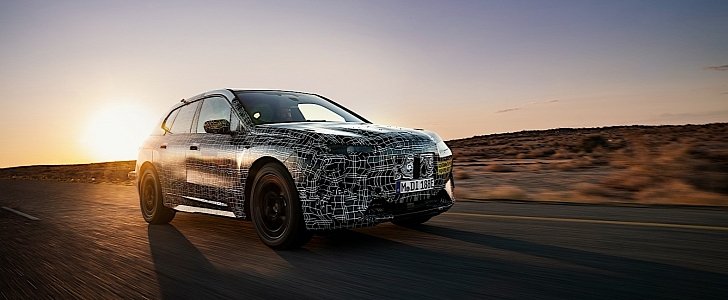As the official launch date for BMW’s new star electric vehicle approaches, testing procedures are intensifying. The iNext, as the car is called for the moment, will launch in 2021 as a game changer in the electric segment for the Germans.
Several prototypes of the car have been for some time now undergoing testing all over the world, from Miramas in France to the Nürburgring in Germany, and all the way to the frozen north of Sweden. And now, some of them were shipped to the Kalahari desert in Africa for what will certainly be a very hardcore program.
The hot climate tests are being conducted to see how the future production car and all its components cope with extreme heat and solar radiation. First and foremost, German engineers are trying to see how the drivetrain and suspension handle in such conditions, when in addition to the heat they are also battered by sand and pebbles.
Then, they’re trying to see how the bodywork resists, how the interior copes, and ultimately how all the high-tech computerized systems of the car survive the ordeal.
BMW says it's pushing the prototype hard, and adds that the tests currently underway are conducted so thoroughly that not even creaking or crackling noises inside, caused by temperature fluctuations, will be allowed.
The future production version iNext started life as the Vision iNext concept shown in 2018. Officially, the powertrain has not been confirmed, but speculation is that the car will rely on a battery big enough to support a range of about 600 km (372 miles).
The test prototypes currently deployed across the world are put together at the Pilot Plant in Munich. Once production kicks off next year, assembly of the car will be made in Dingolfing, the recipient of a €400 million ($437 million) investment announced at the end of last year.
The hot climate tests are being conducted to see how the future production car and all its components cope with extreme heat and solar radiation. First and foremost, German engineers are trying to see how the drivetrain and suspension handle in such conditions, when in addition to the heat they are also battered by sand and pebbles.
Then, they’re trying to see how the bodywork resists, how the interior copes, and ultimately how all the high-tech computerized systems of the car survive the ordeal.
BMW says it's pushing the prototype hard, and adds that the tests currently underway are conducted so thoroughly that not even creaking or crackling noises inside, caused by temperature fluctuations, will be allowed.
The future production version iNext started life as the Vision iNext concept shown in 2018. Officially, the powertrain has not been confirmed, but speculation is that the car will rely on a battery big enough to support a range of about 600 km (372 miles).
The test prototypes currently deployed across the world are put together at the Pilot Plant in Munich. Once production kicks off next year, assembly of the car will be made in Dingolfing, the recipient of a €400 million ($437 million) investment announced at the end of last year.












